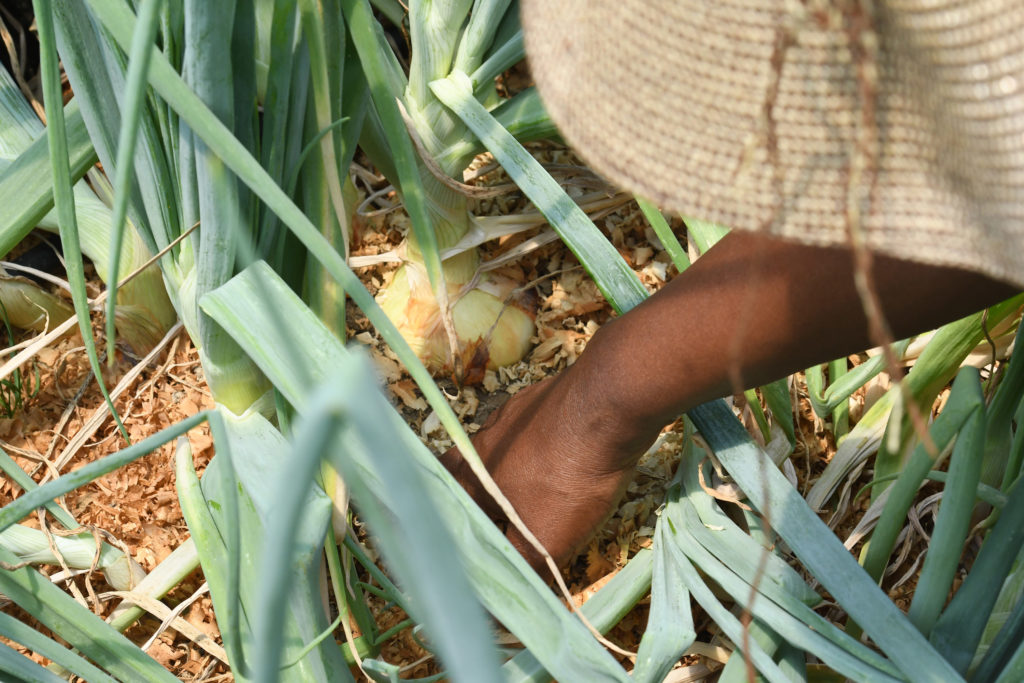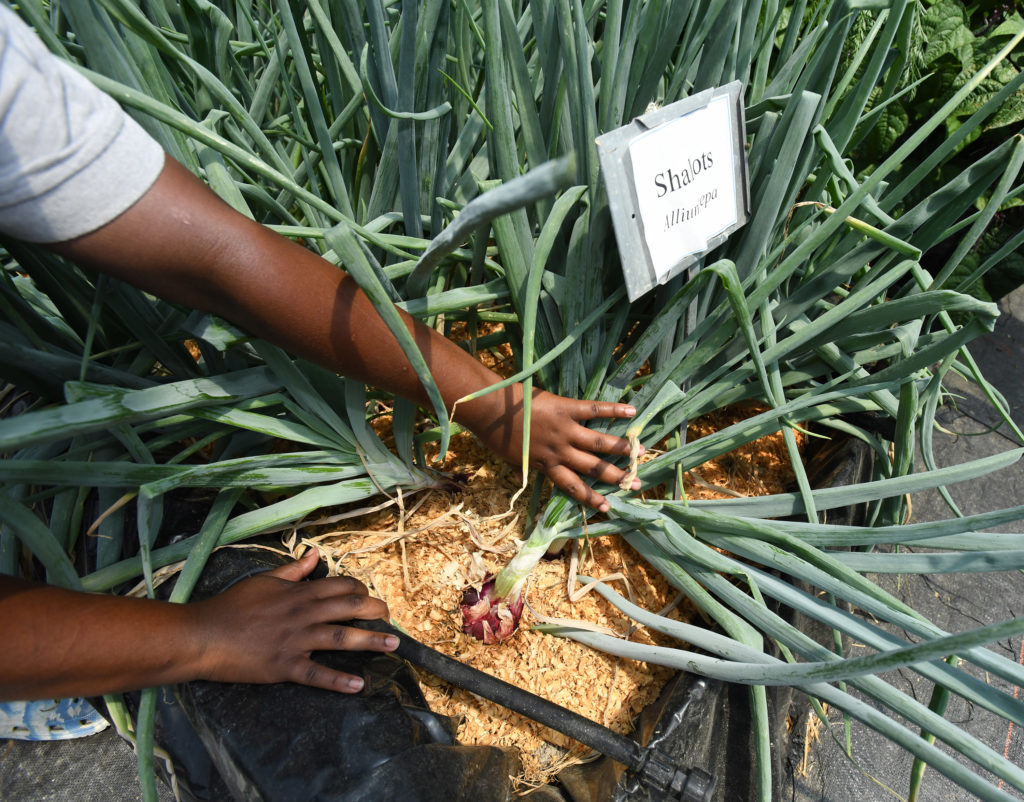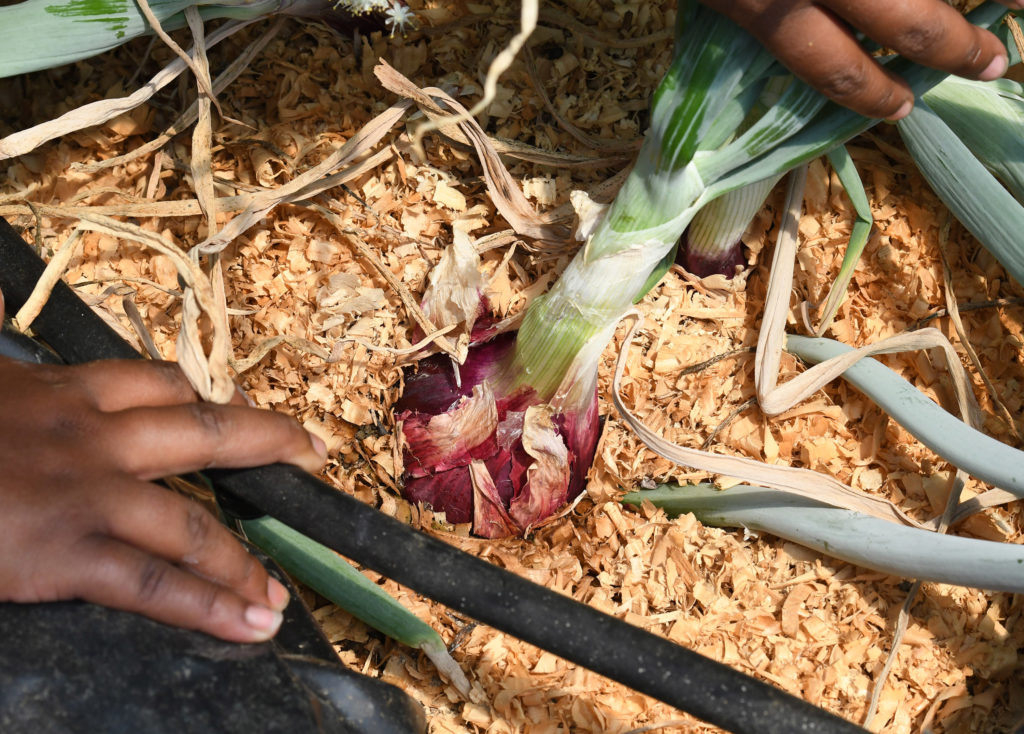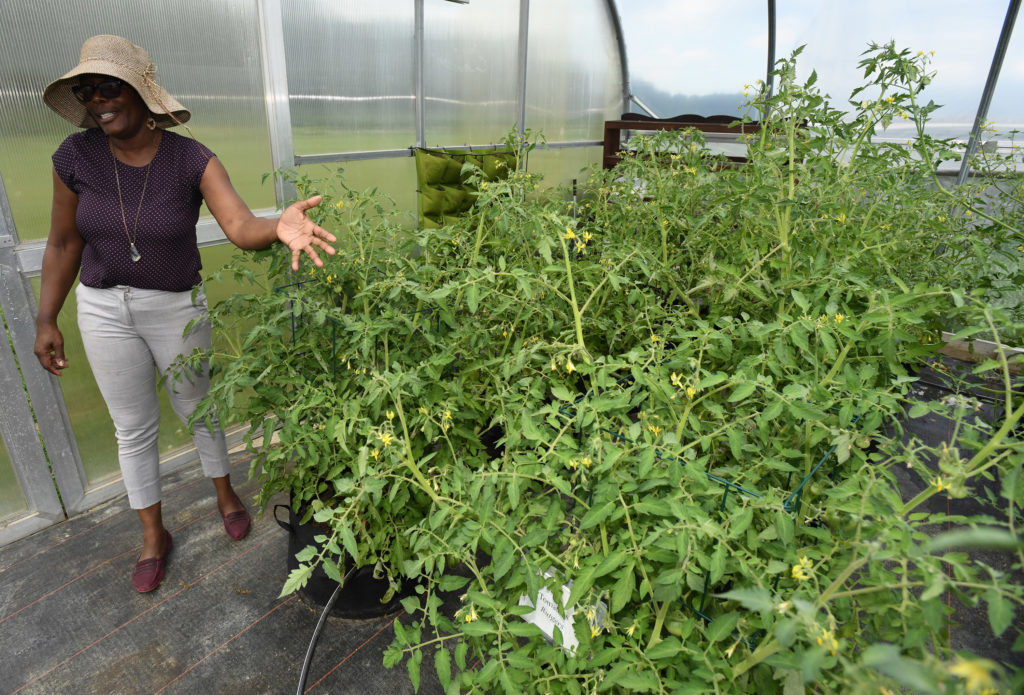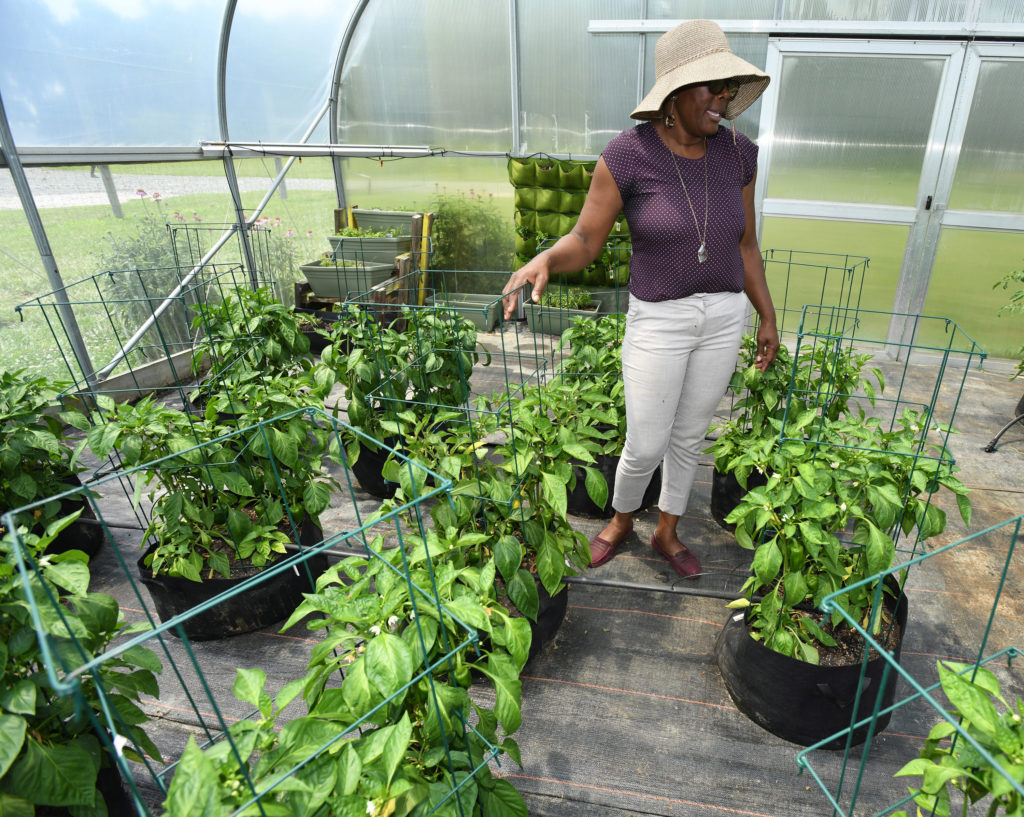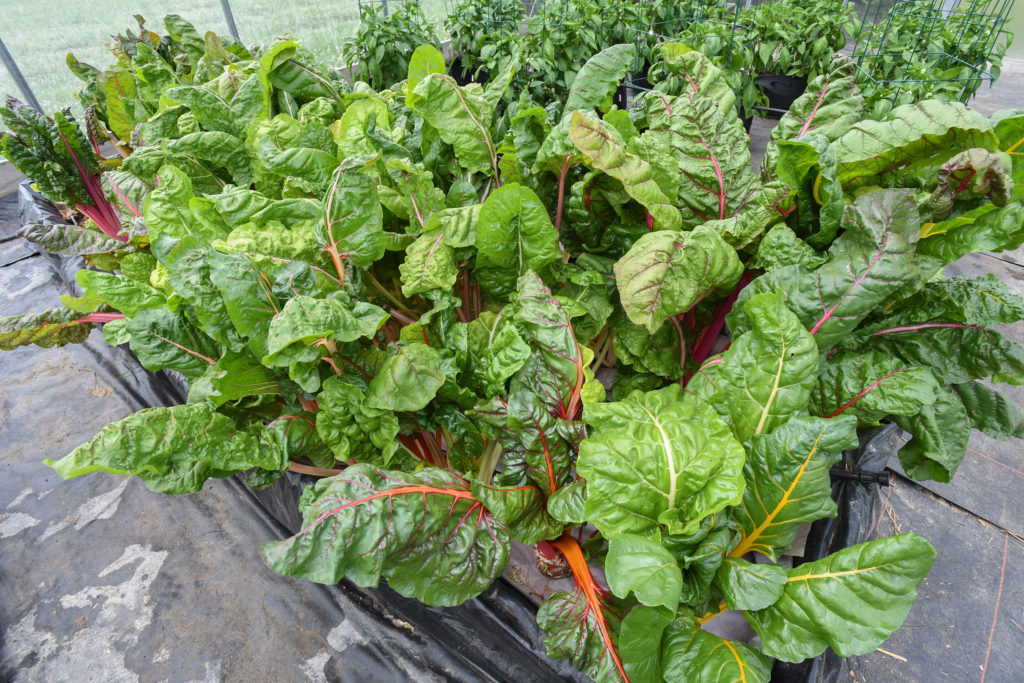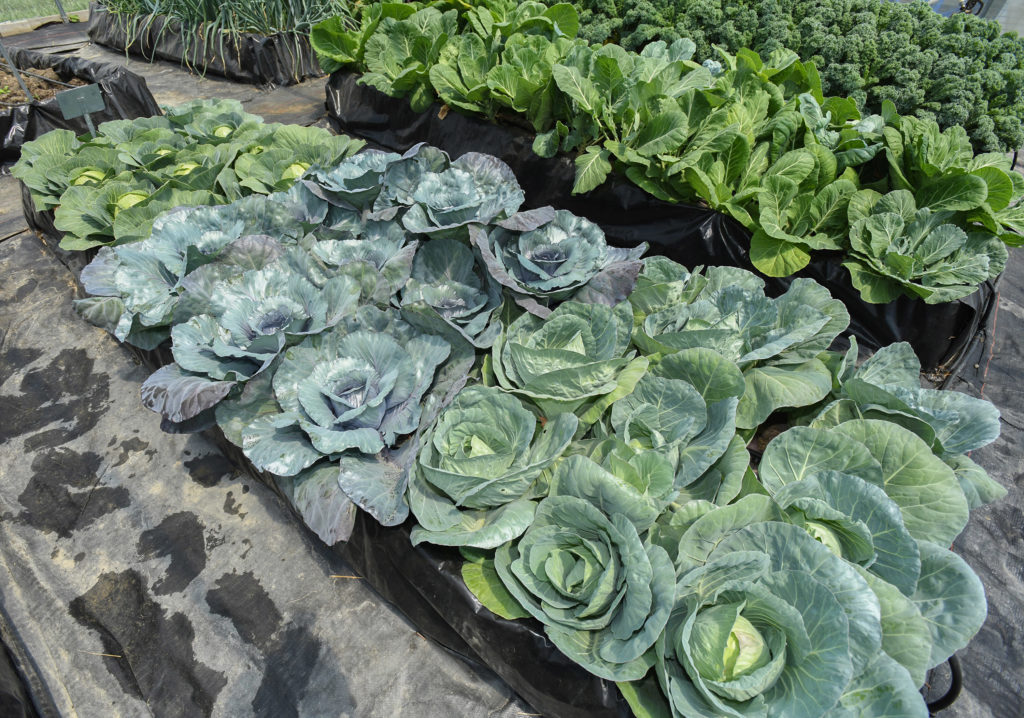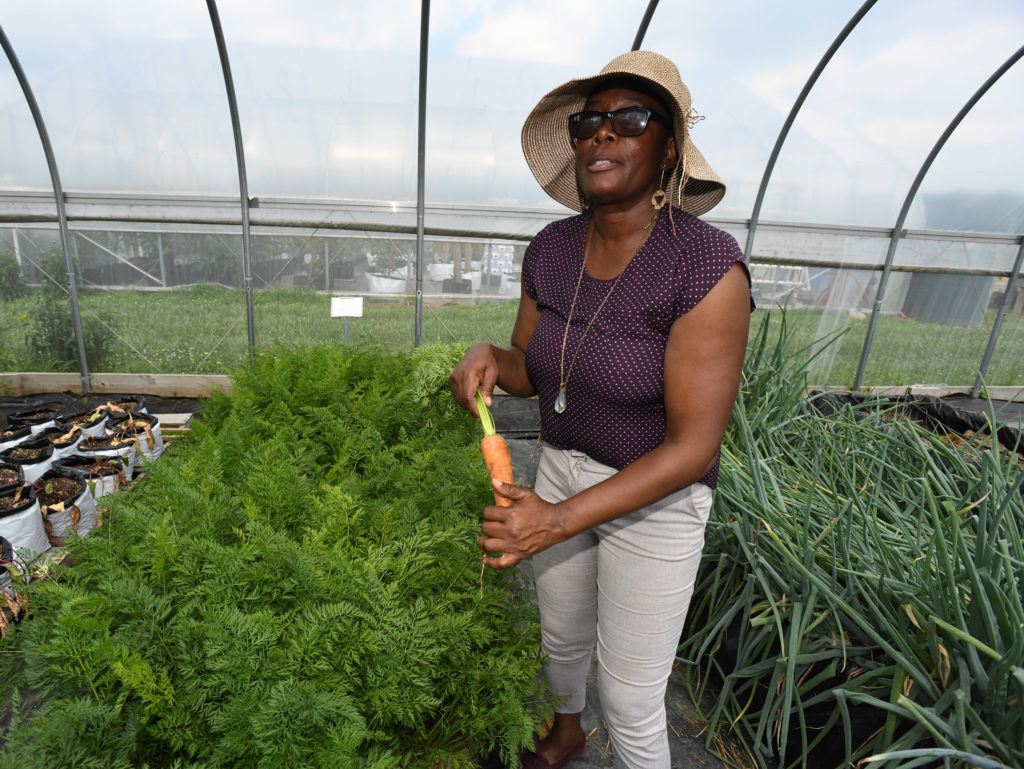
A step inside one of the hoop tunnels at the UMES Research and Education Farm revealed an oasis of lush vegetation beneath which hid over-sized vegetables growing in raised beds, containers, hay bales and vertical aeroponic systems.
“We grow like this to reduce the workload by eliminating weeding as well as to attract and inspire new beginning farmers,” Dr. Nadine Burton, (at left), an alternative crop specialist with UMES Extension, pointed out. “Our goal is to educate people who want to start growing their own food, but don’t know how and to show that agriculture can be easy, attractive and not labor intensive. We can even provide some plants to help people get started.”
“When I was growing up (in Jamaica) we grew most of what we ate,” she said. “We want to show people that they can feed themselves even if they don’t have a large amount of land.”
This greenhouse boasting traditional vegetables, features several varieties of tomatoes, beets, carrots, onions, shallots, potatoes, Swiss chard, three types of cabbages, collard greens, kale, and three varieties of beans-Royal Burgundy, Blue Lake Bush and Cherokee Wax. A high tunnel this size (30’x50′), Burton said, can run a small Community Supported Agriculture (CSA) operation of between 10-15 clients with low labor input, providing them with a weekly supply of fresh produce.
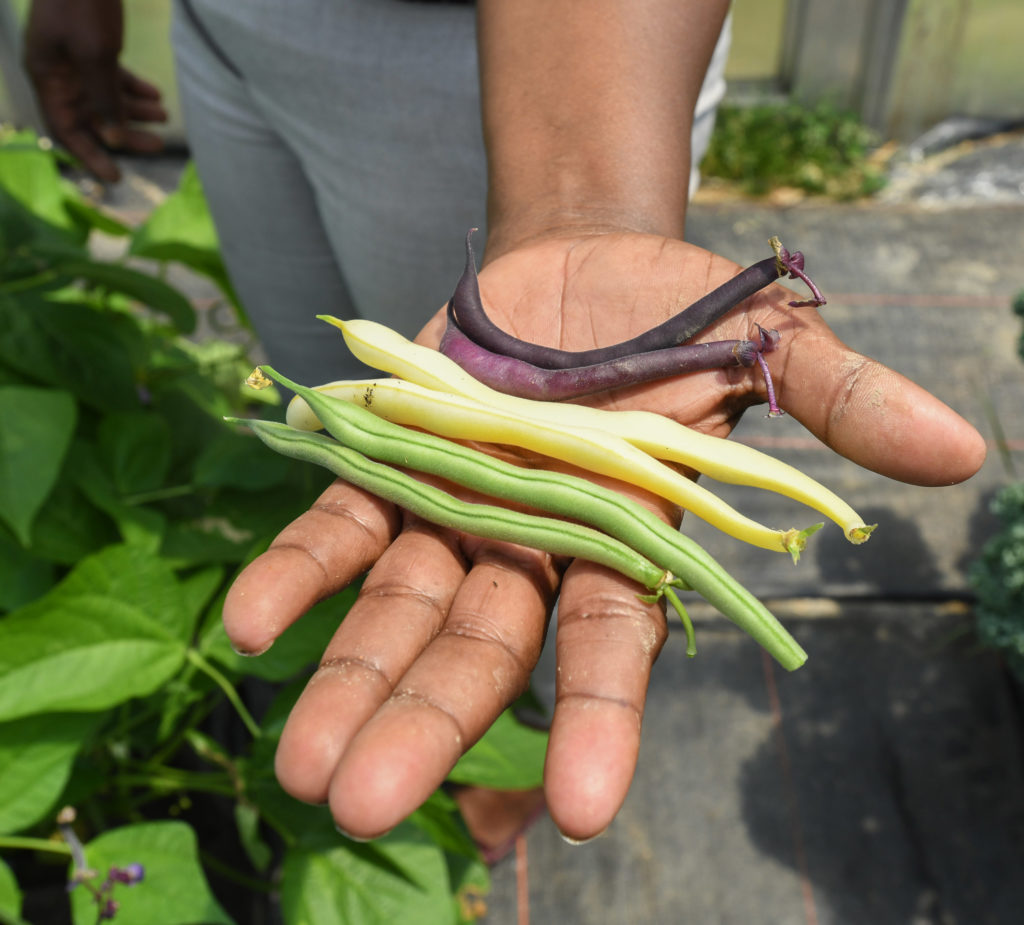
“From three tiny 1’x13′ rows, we got 170 pounds of onions last year,” Burton gushed. “To date, we have harvested over 70 pounds of kale for our 3’x13′ beds.”
This season, she said, she has incorporated an insect netting technique to reduce insect damage and the need for chemicals.
“People can adapt the methods we are demonstrating here to grow in simple bags and containers or in high tunnels, each with the potential for producing high yields,” she said. “When it comes to food security, the fight is for all of us.”
Gail Stephens, agricultural communications and media associate, School of Agricultural and Natural Sciences, University of Maryland Eastern Shore, 410-621-3850, gcstephens@umes.edu.
Photos by Todd Dudek, agricultural communications photographer/videographer, School of Agricultural and Natural Sciences, University of Maryland Eastern Shore, tdudek@umes.edu.
